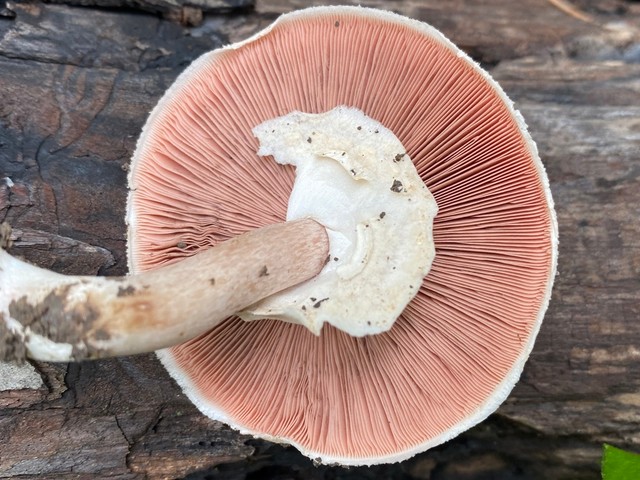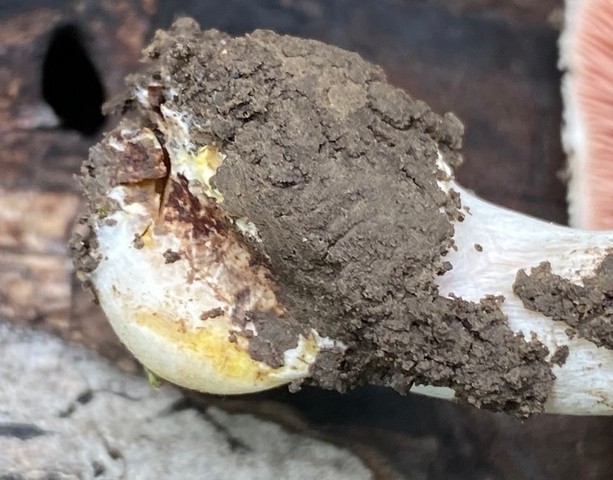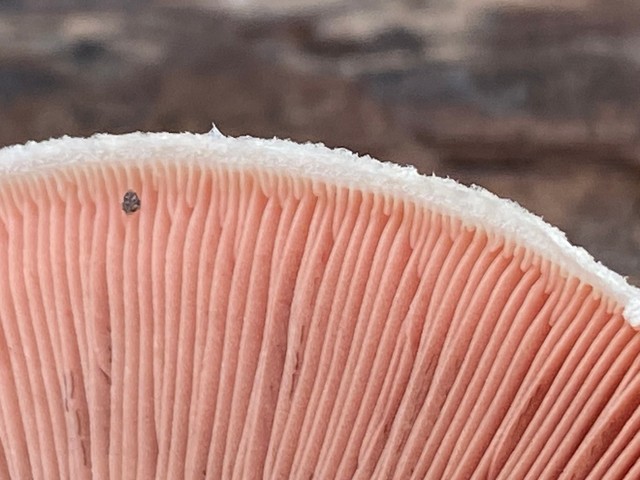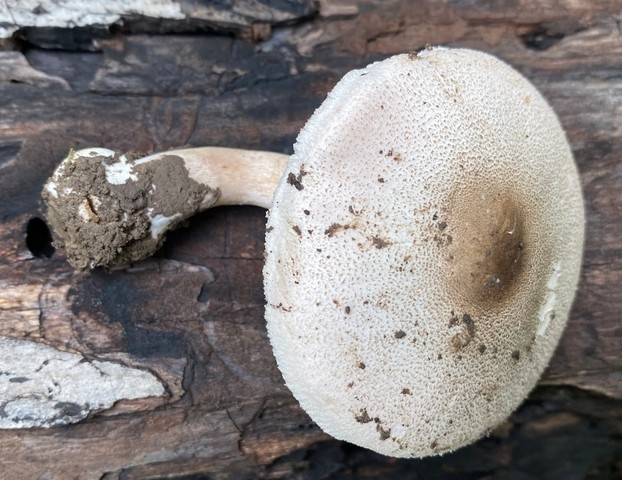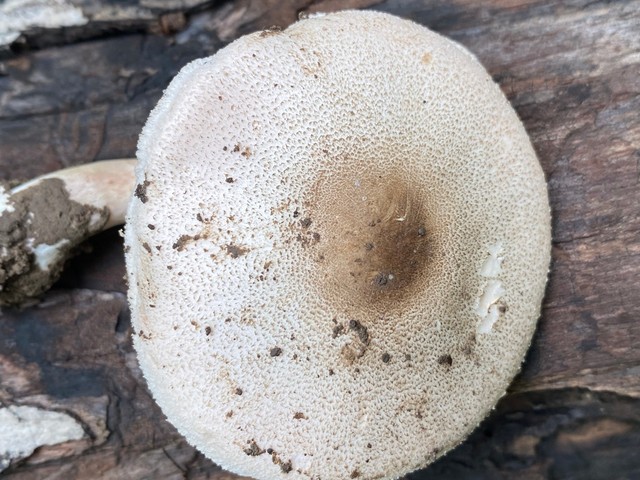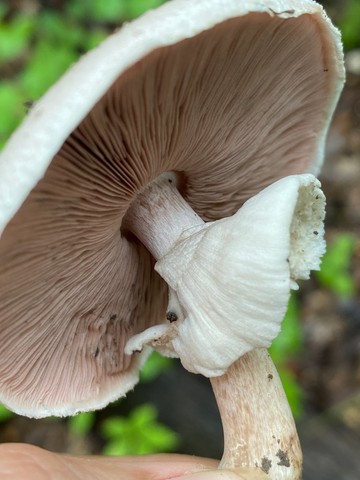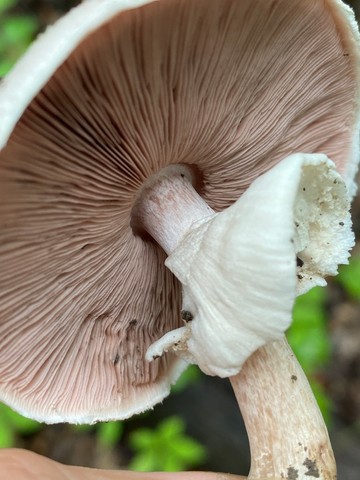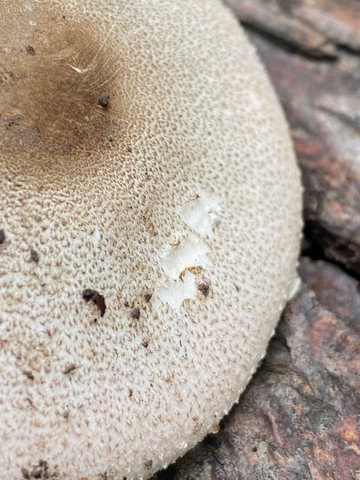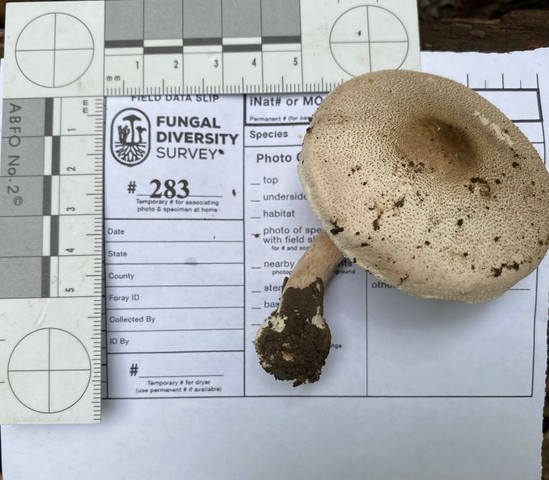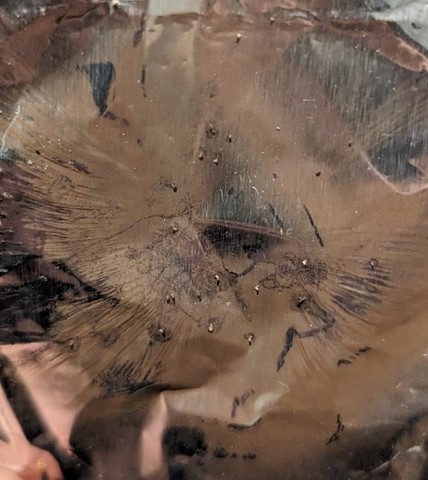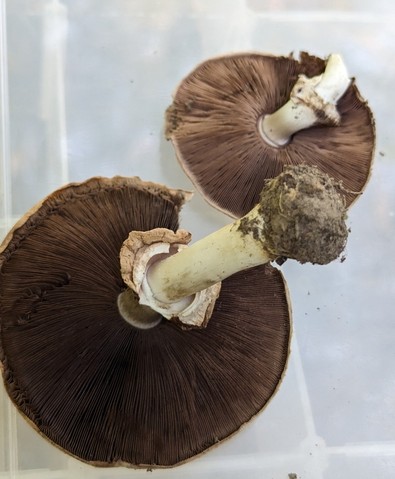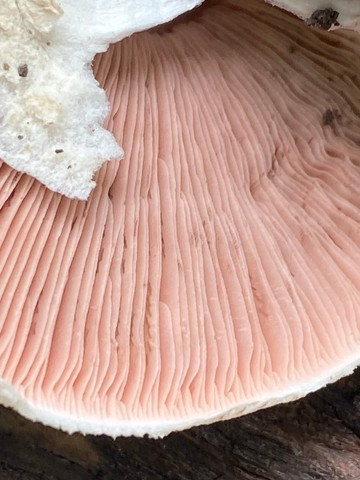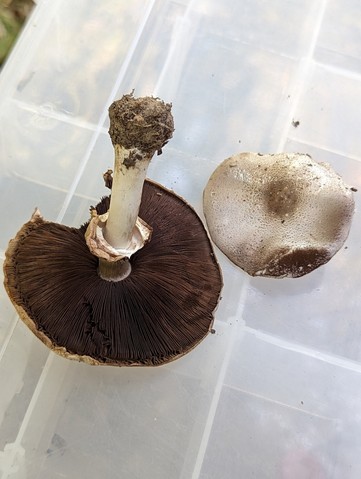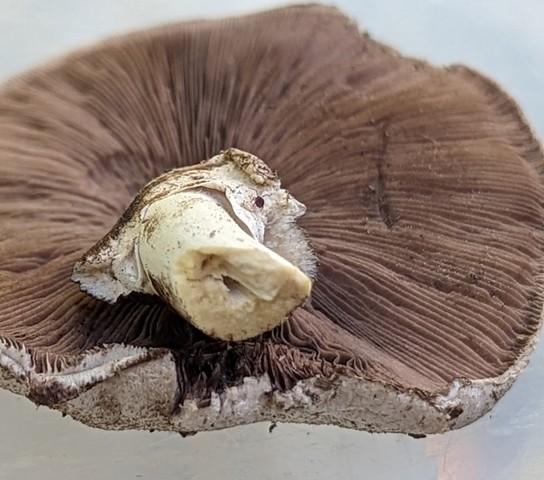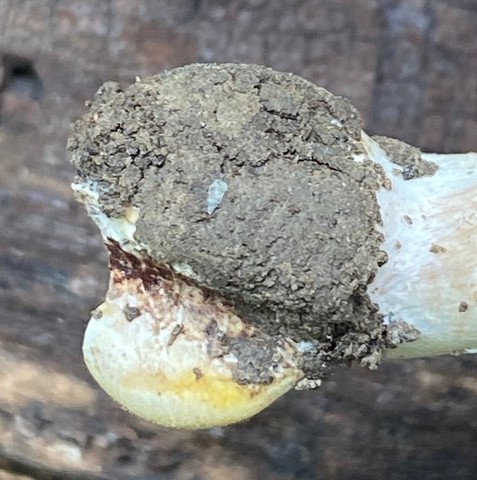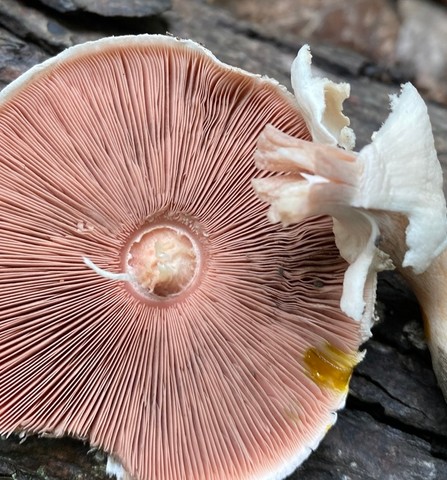Slinder-Stemmed Champion
Agaricus leptocaulis
Life > Fungi > Basidiomycota > Agaricomycotina > Agaricomycetes > Agaricomycetidae > Agaricales > Agaricineae > Agaricaceae > Agaricus
Description
The Slinder-Stemmed Champion (Agaricus leptocaulis) is a decomposer that can be found in soil in mixed woods from late summer to early fall. It has been reported in the Midwest to the East Coast. It can be found growing alone or in small groups. The cap and stem bruise yellow where handled.
Morphology
The cap shape is evenly rounded to broadly rounded, becoming flat with age. Sometimes with a slight umbo. Sometimes splitting radially at the margin. The cap texture is smooth and dry. The color is grayish-brown with brown scales that are more densely collected at the center than the margin.
The gills are free from the stem. The gill color is light pink when young, becoming darker pink, then becoming brown with age. This is due to brown spores maturing on the gill surface over time.
The stem features an elastic pendant-shaped skirt on the top half and a small bulb on the base. Sometimes curved. 1.5-4.5 inches long (3.5-11.5 cm) × 0.3-0.5 inches wide (8-14 mm).
The odor ranges from indistinct to pleasant to phenolic (like band-aids or glue). The spore print is brown.
Observations
August 8th, 2023 Indian Cave State Park
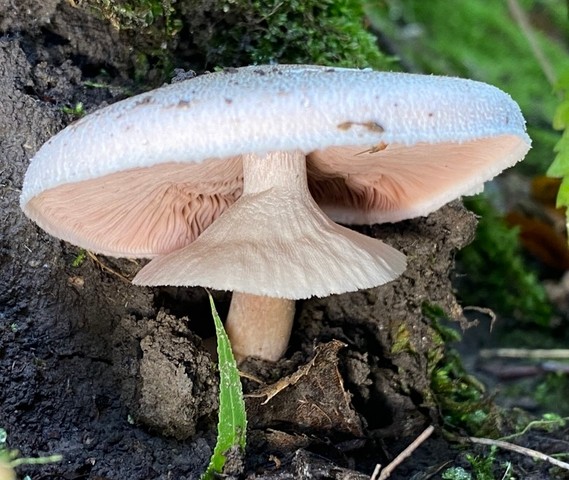
283
Growing gregariously in open mixed oak/hickory woodland edge.
- Cap overall whitish with brown center. Dark scales radiating from the center towards margin. Gill margin with sterile tissue.
- Lamellae pink, crowded, frequent partial gills, and broadly free from the stipe.
- stipe pinkish at apex, turning white below, fibrilose, with a prominent partial veil, and a swollen base that slowly bruises slightly yellow.
- partial veil membranous, delicate, and with an eight entire margin with slight striations from gills.
- Smell: faintly pleasant
- Taste: mild and pleasant
- KOH: highlighter yellow on pileipellis.
9/28/23: 2 additional specimens added to collection.
AAGTCGTAACAAGGTTTCCGTAGGTGAACCTGCGGAAGGATCATTATTGAATTATGTTTTCTAGATCGGTTGTAGCTGGCTCGTAGGAGCATGTGCACGCCTGTCTGGACTTCATTTTCATCCACCTGTGCACCTTTTGTAGTCTTTGTTGGGTATGGAGGAAGTGGTCAGCCTTATCAGCTCTCGCTGGATATGAGGACTTGCAGTGTGAAAGCAGTGCTGTCCGCTACTTGGCCATGGAATCTGTTTCCCGTCAGAGTCTATGTTGTTCATTATACCCTATAAACTGTTATTGAATGTTTTTACATGGGCTTCTATGCCTATGAAAATTGTAATACAACTTTCAGCAACGGATCTCTTGGCTCTCGCATCGATGAAGAACGCAGCGAAATGCGATAAGTAATGTGAATTGCAGAATTCAGTGAATCATCGAATCTTTGAACGCATCTTGCGCTCCTTGGTATTCCGAGGAGCATGCCTGTTTGAGTGTCATTAAATTCTCAACTCTCCTATACTTTGTTGTAAAGGAGGGCTTGGACTGTGGGGGTTTGCTGGCCGCTTGCTGTGGTCAGCTCCTCTGAAATGCATTAGCAGAACTGTTTGCGATCTGCCACAAGTGTGATAAATTATCTACACTGGCGAGGGGATTGCTCTCTGTGTTCAGCTTCTAATCGTCTTCAGTGACAATTTCTTGAATGCTTGACCTCAAATCAGGTAGGACTACCCGCTGAACTTAAGView MycoMap DNA Results
References
Kerrigan, RW. 2016. Agaricus of North America. Memoirs of the New York Botanical Garden. 114:1-570
Kuo, M. (2018, January). Agaricus leptocaulis. Retrieved from the MushroomExpert.Com Web site: http://www.mushroomexpert.com/agaricus_leptocaulis.html
Created October 14, 2025 at 3:03 PM

